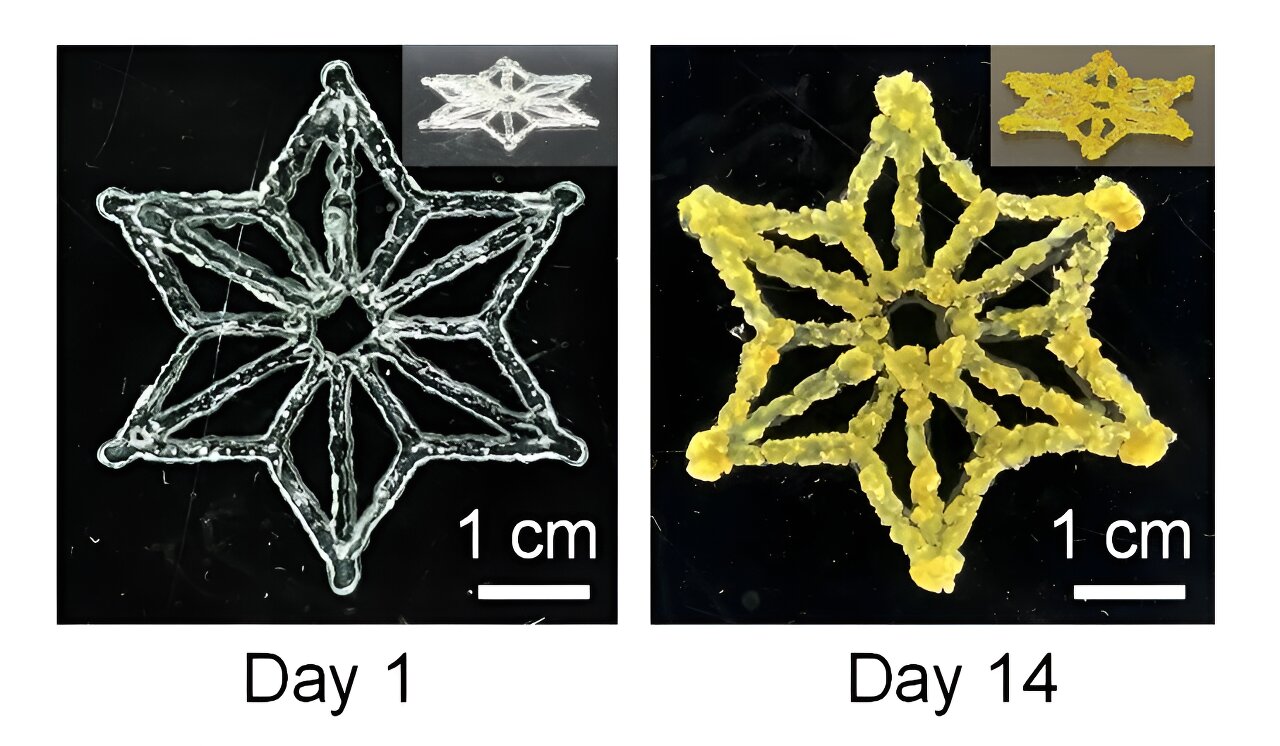Marriage of synthetic biology and 3D printing produces programmable living materials
Date: 6.5.2024
Scientists are harnessing cells to make new types of materials that can grow, repair themselves and even respond to their environment. These solid "engineered living materials" are made by embedding cells in an inanimate matrix that's formed in a desired shape.
 Now, researchers report in ACS Central Science that they have 3D printed a bioink containing plant cells that were then genetically modified, producing programmable materials. Applications could someday include biomanufacturing and sustainable construction.
Now, researchers report in ACS Central Science that they have 3D printed a bioink containing plant cells that were then genetically modified, producing programmable materials. Applications could someday include biomanufacturing and sustainable construction.
Ziyi Yu, Zhengao Di and colleagues wanted to change that by making intricately shaped EPLMs containing genetically engineered plant cells with customizable behaviors and capabilities.
The researchers mixed tobacco plant cells with gelatin and hydrogel microparticles that contained Agrobacterium tumefaciens, a bacterium commonly used to transfer DNA segments into plant genomes. This bioink mixture was then 3D printed on a flat plate or inside a container filled with another gel to form shapes such as grids, snowflakes, leaves and spirals.
Next, the hydrogel in the printed materials was cured with blue light, hardening the structures. During the ensuing 48 hours, the bacteria in the EPLMs transferred DNA to the growing tobacco cells. The materials were then washed with antibiotics to kill the bacteria. In the following weeks, as the plant cells grew and replicated in the EPLMs, they began producing proteins dictated by the transferred DNA.
Image source: Wang et al. (2024), ACS Central Science.








